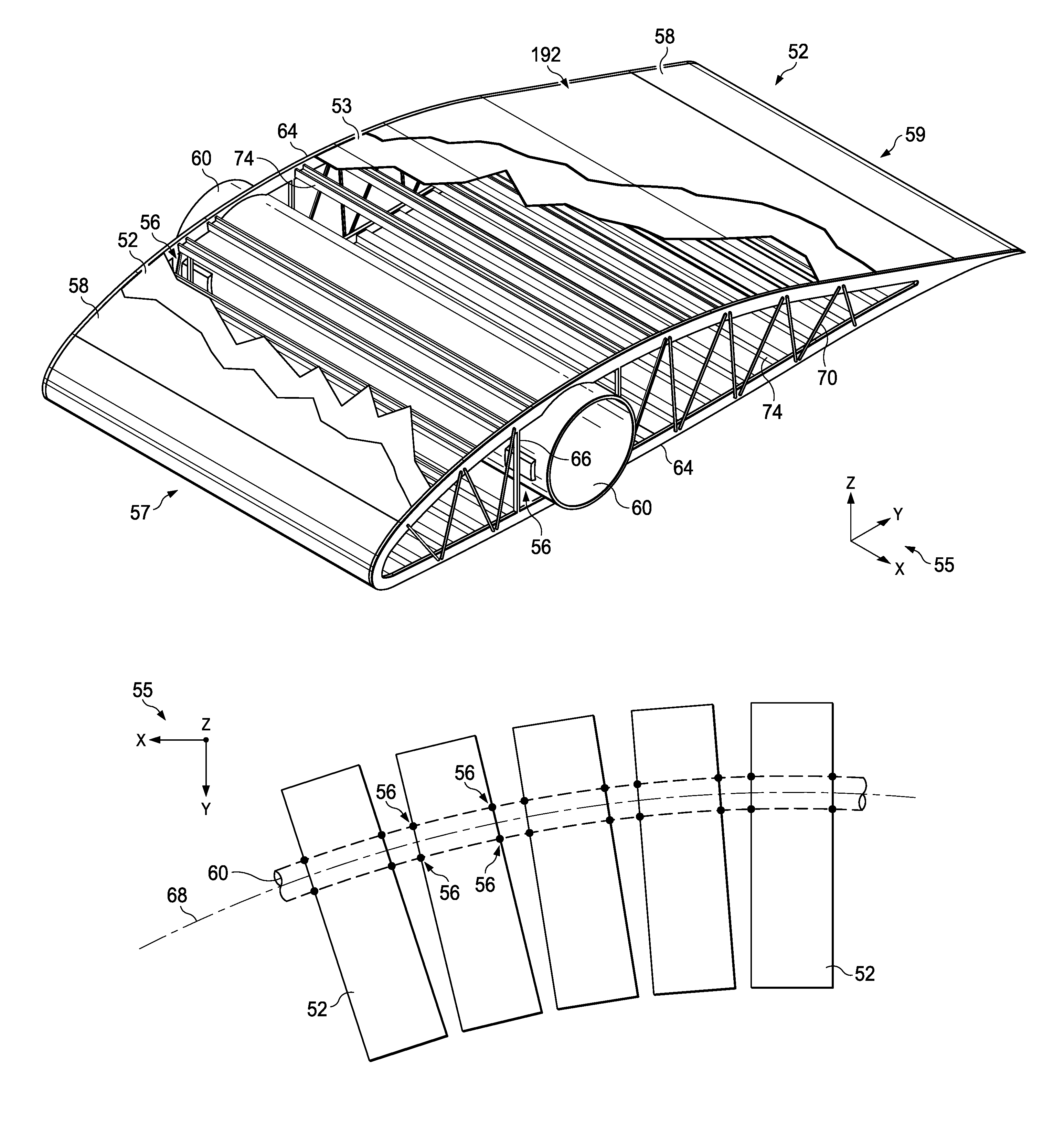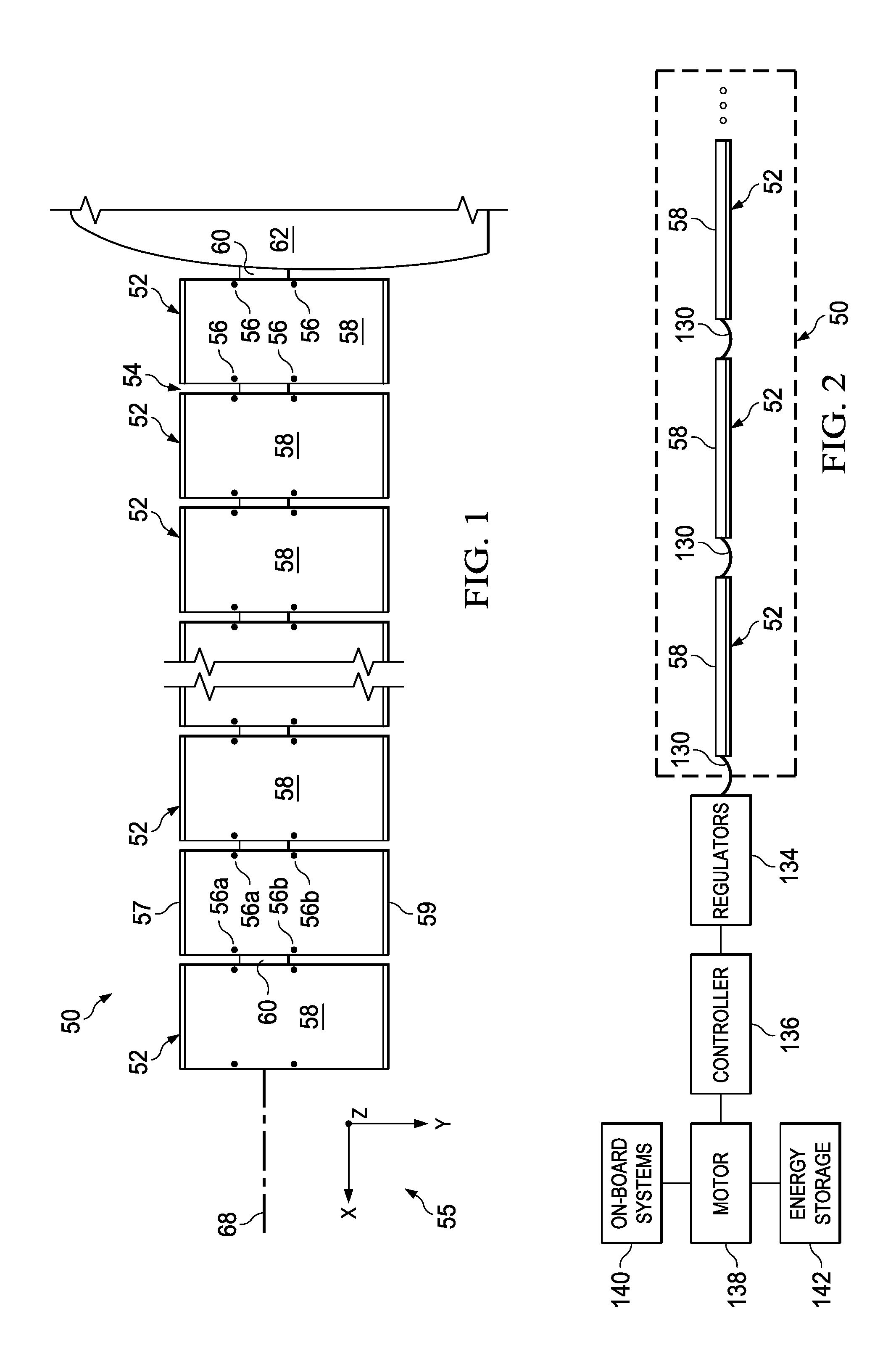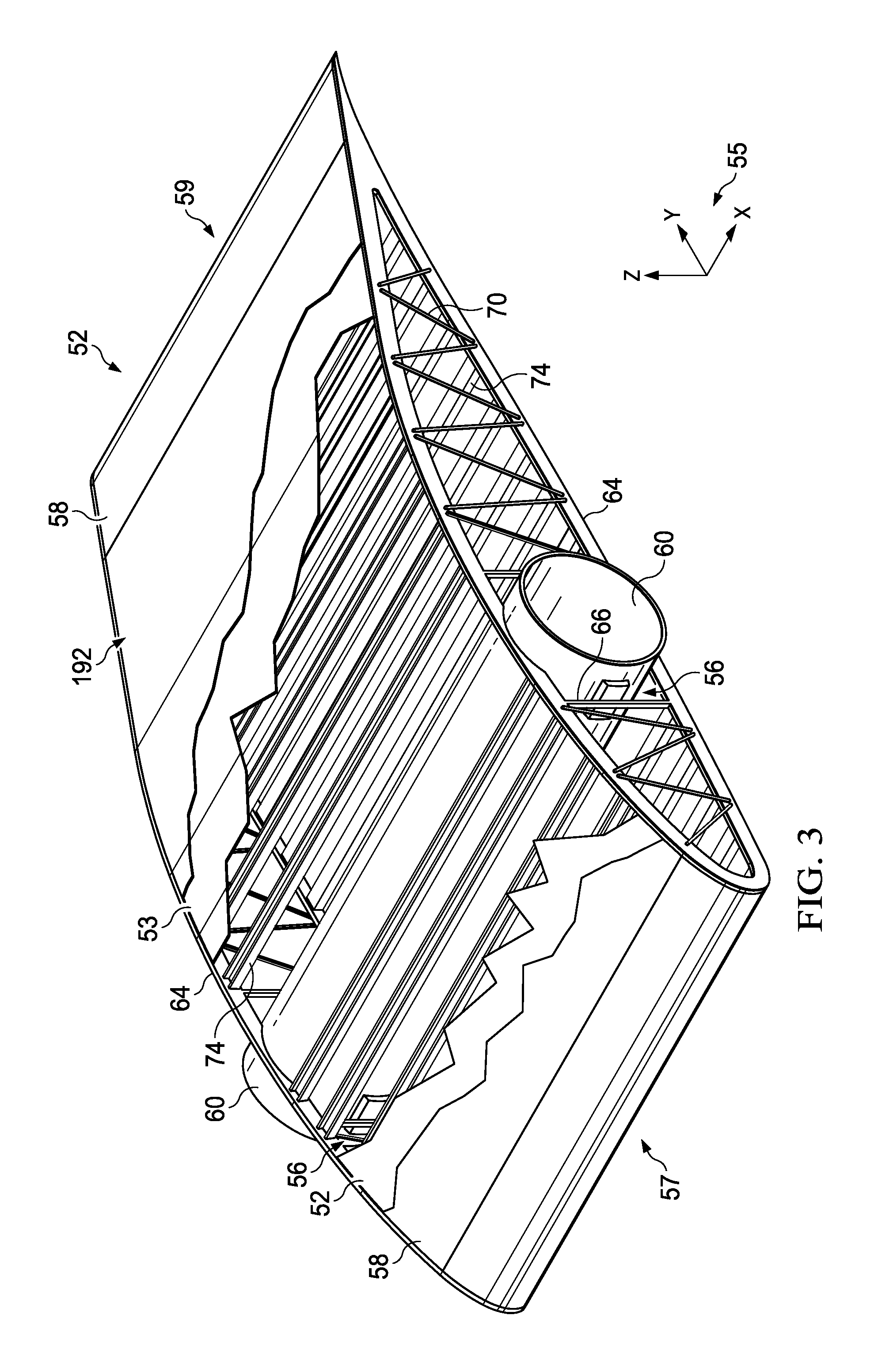Segmented aircraft wing having solar arrays
a solar array and aircraft technology, applied in the field of aircraft wings, can solve the problems of significantly reducing adversely affecting the integrity of the solar panel, and affecting the aerodynamic performance of the aircraft, and achieve the effect of long wingspan and low strain levels
- Summary
- Abstract
- Description
- Claims
- Application Information
AI Technical Summary
Benefits of technology
Problems solved by technology
Method used
Image
Examples
Embodiment Construction
[0061]Referring first to FIG. 1, an aircraft wing 50 may be attached to a pod or fuselage 62 and is segmented into a plurality of separate wing segments 52 that are spaced apart from each other to form gaps 54 of variable width. It should be noted however, the principals of the disclosed embodiments are applicable to a wing 50 comprising a “flying wing” type aircraft that does not employ a pod or fuselage. Each of the wing segments 52 may be mounted on wing spar 60 for movement relative to the wing spar 60 when the wing spar flexes during flight. In one embodiment, each of the wing segments 52 is attached to and supported on the wing spar 60 by pivotal joints 56, however, other types of joints allowing this relative movement between the wing segments 52 and the wing spar 60 are possible. The pivotal joints 56 may comprise a pair of laterally spaced forward joints 56a, and a pair of laterally spaced aft joints 56b. In the illustrated embodiment, four pivotal joints 56 pivotally conne...
PUM
| Property | Measurement | Unit |
|---|---|---|
| thicknesses | aaaaa | aaaaa |
| thick | aaaaa | aaaaa |
| weight | aaaaa | aaaaa |
Abstract
Description
Claims
Application Information
 Login to View More
Login to View More - R&D
- Intellectual Property
- Life Sciences
- Materials
- Tech Scout
- Unparalleled Data Quality
- Higher Quality Content
- 60% Fewer Hallucinations
Browse by: Latest US Patents, China's latest patents, Technical Efficacy Thesaurus, Application Domain, Technology Topic, Popular Technical Reports.
© 2025 PatSnap. All rights reserved.Legal|Privacy policy|Modern Slavery Act Transparency Statement|Sitemap|About US| Contact US: help@patsnap.com



